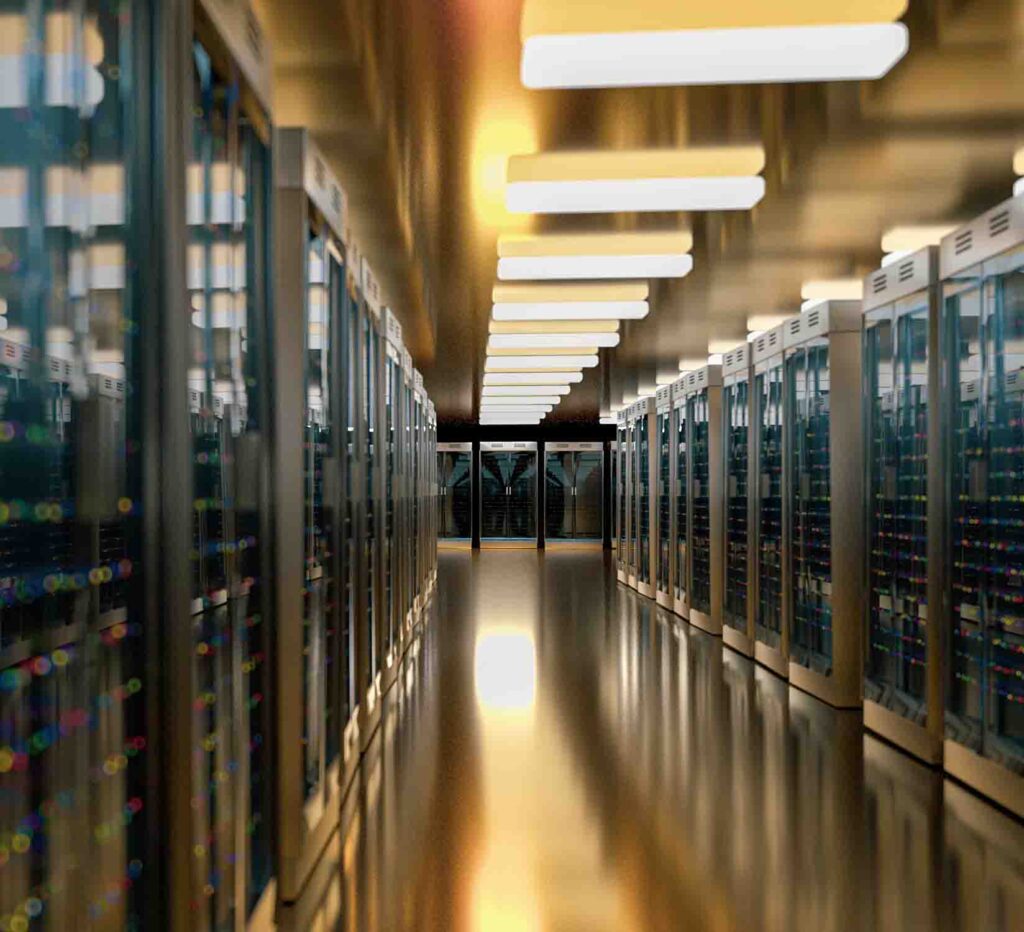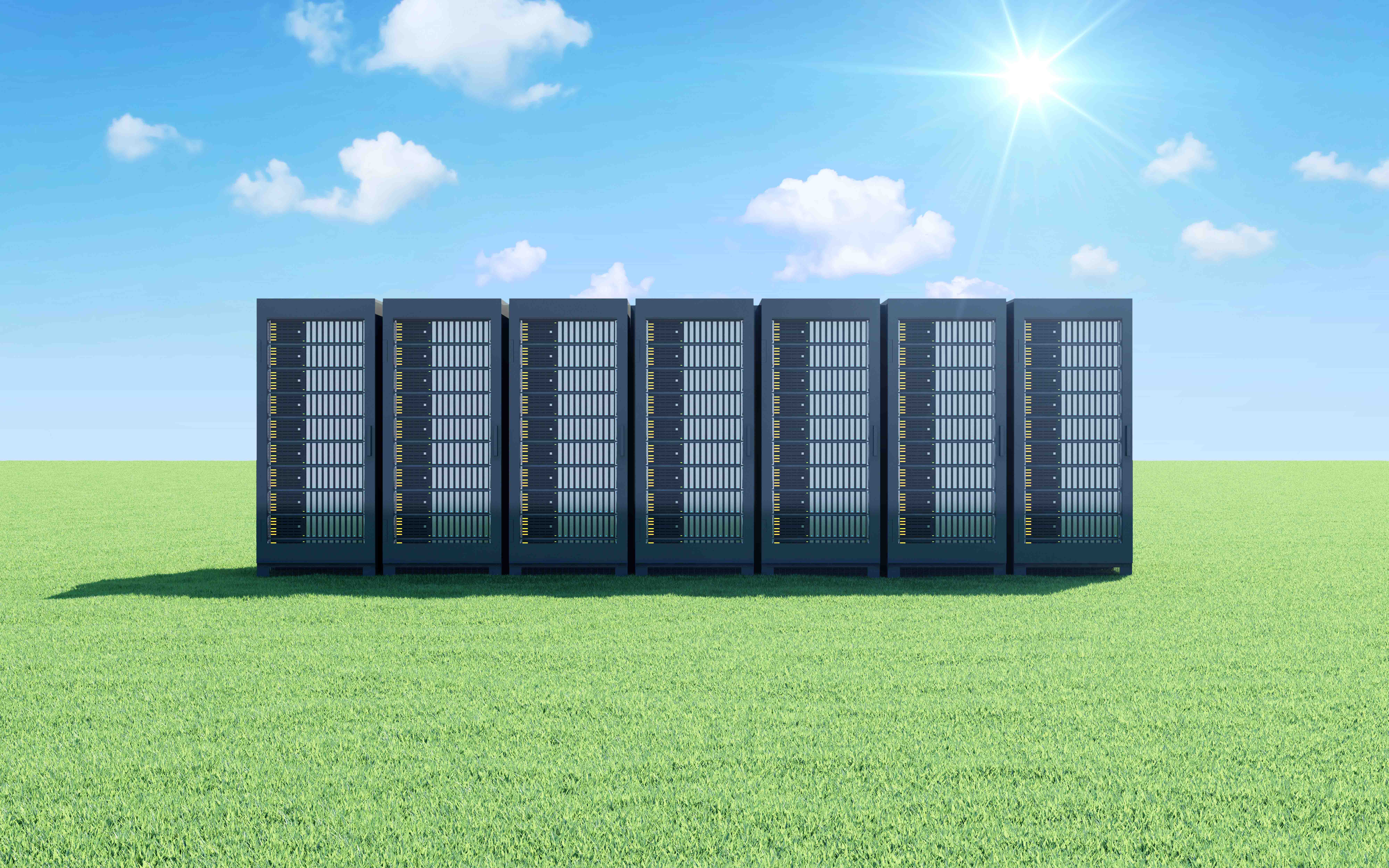While digital consumption has been increasing for several decades, artificial intelligence, social networks and the number of people with access to digital technology in emerging countries are increasing demand exponentially.
A data centre can be a company’s own facility, a colocated facility, a host for cloud computing services or be an intensive computing centre.
However, data storage takes up space, it consumes water and energy to run and cool the machines, and it must provide security and reliability – just think of the extreme temperatures that machines can reach.
They account for 3 to 4% of global greenhouse gas emissions* today, and could reach 14% by 2040. Meanwhile, they use 3% of the world’s electricity, and this figure will rise to 10% by 2030. Energy can therefore account for up to 75% of a data centre’s operating costs**. Regulations and standards already apply to the construction of data centres, such as EN 50600 and ISO 50001, to which the European Directive on energy efficiency refers.
The European Commission’s document “Shaping Europe’s Digital Future” specifically states that data centres must be carbon neutral by 2030.
To make data centres greener, we first need to optimise energy efficiency, right from the design stage.
When you consider that air conditioning and cooling account for 40-50% of a data centre’s energy consumption, improvement is a major focus area. The impact can be reduced by integrating into local energy schemes through the supply of renewable energy, for example by locating near wind turbines, or by recovering heat and injecting it into district heating systems. With this eco-responsibility objective in mind, DCs must incorporate eco-design from the outset of the project, become more energyefficient and optimise cooling systems.
To date, there are different cooling technologies, known as conventional cooling, immersion cooling and on-chip cooling.
There are two types of conventional cooling system. The CRAC (computer room air conditioning), which is particularly useful in countries where it is naturally cold, injects cold air from outside using fans, and the CRAH (computer room air handling), which uses a chilled water chiller.
In conventional cooling, innovations such as the use of residual heat are possible. Johnson Control recently announced the launch of an R-1234ze centrifugal chiller.
The use of bio-sourced heat transfer fluids such as Greenway® Neo N, which consume less energy in their production than fossil-based products, is another way of improving energy efficiency. This heat transfer fluid can be combined with the production of green electricity in solar collectors or geothermal installations.
In immersion cooling, the servers are immersed in a bath with Novec fluids marketed by the Dehon group. Users can also help to reduce environmental impact by using digital technology more responsibly on a daily basis, as AGIT (Alliance Green IT) points out in its publications. Did you know, for example, that 4G consumes more energy than WiFi?
There is no doubt that the energy challenges facing DCs will drive innovation and lead to a reorganisation of players in this market.
*Shift Project report. ** AGIT- Data Centre KPIs. DC: Data Centre

Did you know ?
Climalife offers bulk delivery and decanting services for heat transfer fluids.
ALL THESE SOLUTIONS ARE AVAILABLE FROM CLIMALIFE
Contact us to find out more

